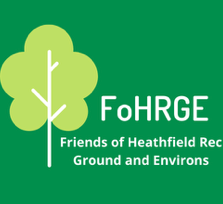Heathfield Recreation Ground new 1.8Ha Nature Extension is open and called Jubilee Meadow
Why is the Rec getting bigger?
As part of the planning application for the construction of Turing House School, 1.8 hectares was set aside to become new public open space managed primarily for nature.
Where is the money coming from?
Under the agreement in the Turing House School planning application, the Education and Skills Funding Agency have provided funds to improve the land for wildlife, with more limited funds for the public elements, and monies to cover the first five years of maintenance.
So what’s the plan?
The site is a natural parkland. In autumn neutral meadow bordered by specimen trees will be planted. Boundary hedges, rough grassland with low scrub and fruit trees or wild bird cover crop will frame the site. Views into the neighbouring Metropolitan Open Land (the rec) will be maintained. Paths traverse the different character areas, with benches at viewpoints and interpretation boards. Use is envisaged to be light recreation – natural history, walking or jogging etc.
Meadow management
The existing meadow is dominated by coarse grasses characteristic of road verges, re-sown areas and disturbed places where there is limited management. In some areas the vegetation is moderately species-rich with a range of flowering plants, but still typical of disturbance and infrequent mowing. The meadow will be improved by harrowing strips or areas within the meadow, creating bare soil on to which a bespoke meadow seed mix is sown, to increase species diversity. The mix will introduce species typical of lowland hay meadows. The following year, plug plants of species more difficult to establish from seed will be planted in small clusters.
The buffer areas alongside boundaries (and in small islands where appropriate) will comprise tall grass, tall herb species and scattered young scrub, and will be cut on a two year rotation with up to 20% left uncut completely to benefit invertebrates and small mammals. Bramble areas will be maintained but not allowed to expand too much. Desirable species will be introduced through plug, whip and shrub planting with seeds and berries allowed to remain uncut for winter food. This zone will add diversity to the meadow habitat, increasing the food and cover available. Along at least one section of the boundary, a cereal-based cover crop will be established to provide late-flowering plants to extend the season for bees and pollinators and winter food for birds.
Hedges and carefully chosen trees
Native hedgerows will be planted in open areas along the western and eastern boundaries. Whips will be mixed with larger shrubs to create visible impact and structure. The new hedges will be laid at the earliest opportunity, after 5-8 years. Temporary fencing may be used to protect the hedgerows until fully established. Tree planting will take place in appropriate locations, mainly limited to the margins of the site in order to avoid negatively impacting the grassland quality. Trees will mainly be smaller species of value for wildlife – fruits and nuts – but there is room for a small number of larger specimen trees to add diversity and enhance the landscape.
Wildlife habitats
A range of other small enhancements will be created or installed within the new site: stag beetle loggeries within the buffer areas; bat and bird boxes; bee nesting habitats, hedgehog boxes and habitats, small soil scrapes for invertebrates; and soil-capped log piles.
Paths, benches, boards, and bins
A long path runs around the boundary with shorter loops created by cross-cutting paths. Benches and interpretation boards have been installed along the surfaced route. Bins would be installed along Coronation Walk near the entrances.
